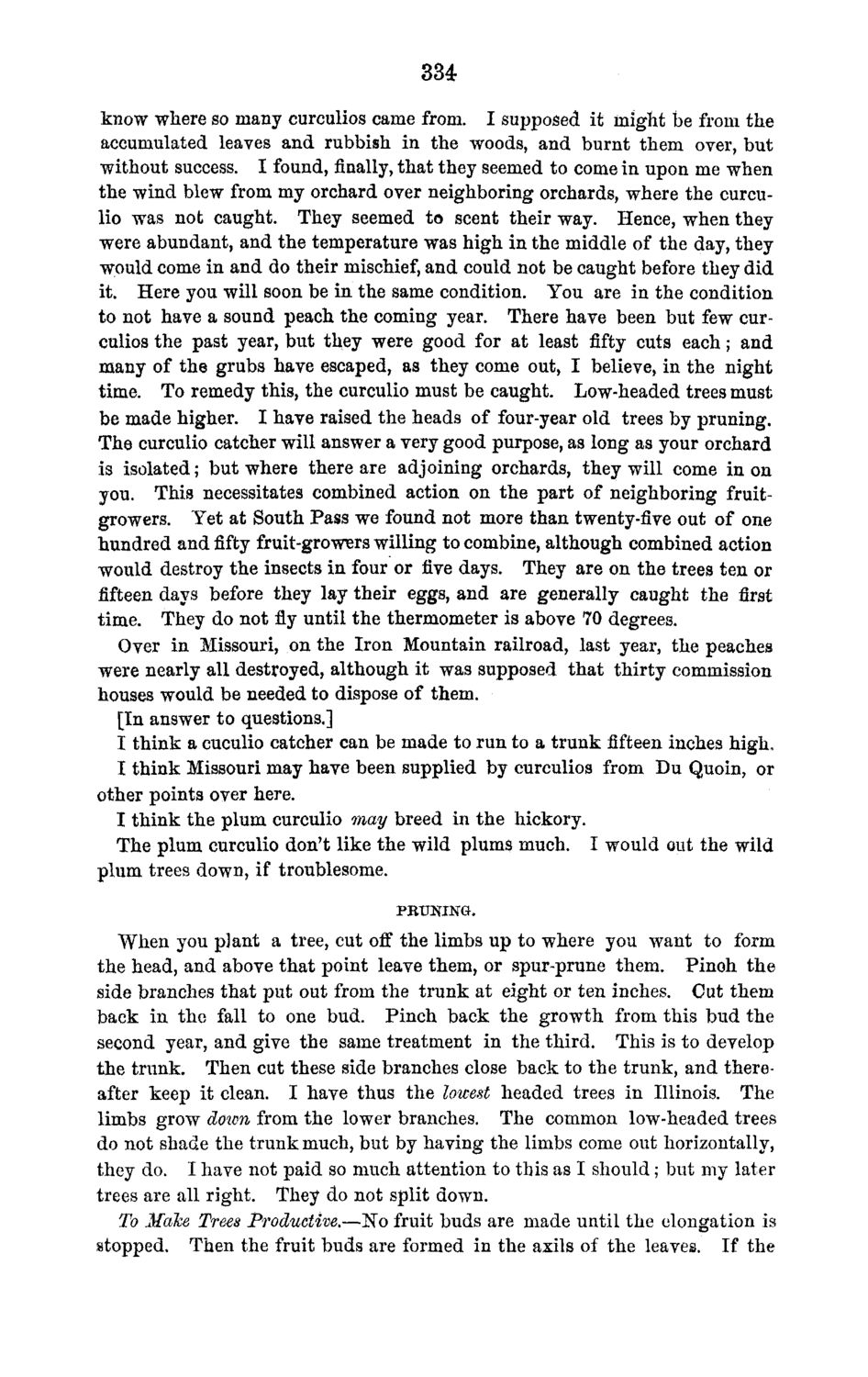| |
| |
Caption: Board of Trustees Minutes - 1870
This is a reduced-resolution page image for fast online browsing.

EXTRACTED TEXT FROM PAGE:
334 know where so many curculios came from. I supposed it might be from the accumulated leaves and rubbish in the woods, and burnt them over, but without success. I found, finally, that they seemed to come in upon me when the wind blew from my orchard over neighboring orchards, where the curculio was not caught. They seemed to scent their way. Hence, when they were abundant, and the temperature was high in the middle of the day, they would come in and do their mischief, and could not be caught before they did it. Here you will soon be in the same condition. You are in the condition to not have a sound peach the coming year. There have been but few curculios the past year, but they were good for at least fifty cuts each; and many of the grubs have escaped, as they come out, I believe, in the night time. To remedy this, the curculio must be caught. Low-headed trees must be made higher. I have raised the heads of four-year old trees by pruning. The curculio catcher will answer a very good purpose, as long as your orchard is isolated; but where there are adjoining orchards, they will come in on you. This necessitates combined action on the part of neighboring fruitgrowers. Yet at South Pass we found not more than twenty-five out of one hundred and fifty fruit-growers willing to combine, although combined action would destroy the insects in four or five days. They are on the trees ten or fifteen days before they lay their eggs, and are generally caught the first time. They do not fly until the thermometer is above 70 degrees. Over in Missouri, on the Iron Mountain railroad, last year, the peaches were nearly all destroyed, although it was supposed that thirty commission houses would be needed to dispose of them. [In answer to questions.] I think a cuculio catcher can be made to run to a trunk fifteen inches high, I think Missouri may have been supplied by curculios from Du Quoin, or other points over here. I think the plum curculio may breed in the hickory. The plum curculio don't like the wild plums much. I would out the wild plum trees down, if troublesome. PRUNING. When you plant a tree, cut off the limbs up to where you want to form the head, and above that point leave them, or spur-prune them. Pinoh the side branches that put out from the trunk at eight or ten inches. Cut them back in the fall to one bud. Pinch back the growth from this bud the second year, and give the same treatment in the third. This is to develop the trunk. Then cut these side branches close back to the trunk, and thereafter keep it clean. I have thus the lowest headed trees in Illinois. The limbs grow down from the lower branches. The common low-headed trees do not shade the trunk much, but by having the limbs come out horizontally, they do. I have not paid so much attention to this as I should; but my later trees are all right. They do not split down. To Make Trees Productive.—No fruit buds are made until the elongation is stopped. Then the fruit buds are formed in the axils of the leaves. If the
| |